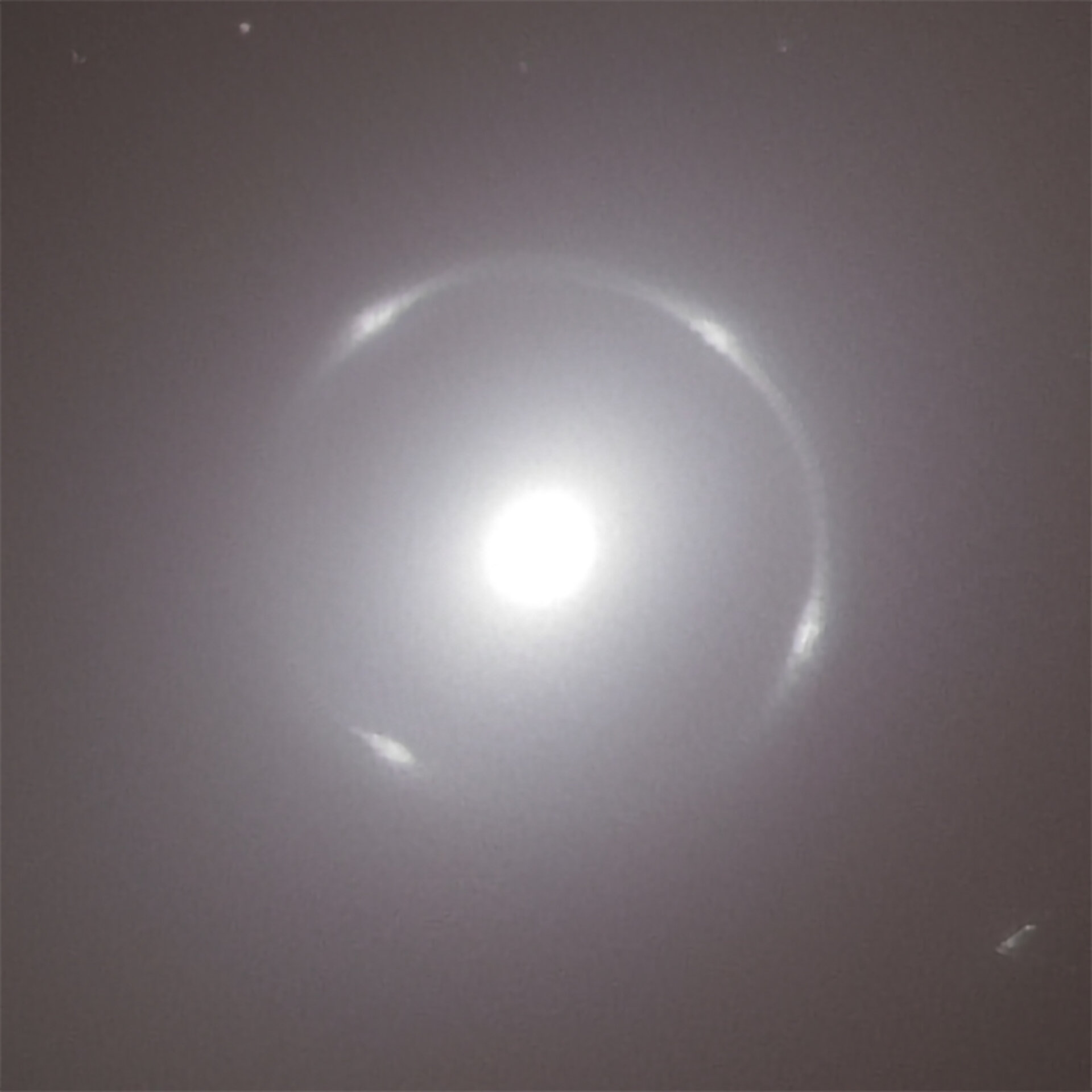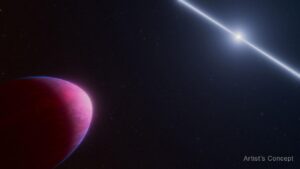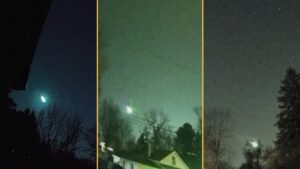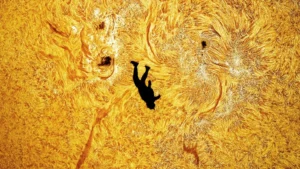Albert Einstein predicted in 1912 that massive objects should bend light as it passes through their gravitational field. He published his theory of general relativity four years later, and the curvature of light seemed a minor point at the time.
When Russian physicist Orest Khvolson posited that in rare cases, the bending of light would create a halo effect, Einstein acknowledged this but wrote, “Of course, there is no hope of observing this phenomenon directly.”
Einstein, for once, was wrong. This week, a team from the European Space Agency’s dark energy survey telescope Euclid published a high-resolution photo of a halo effect called an Einstein ring. And unlike previously observed Einstein rings, this one is from a nearby galaxy.
Einstein rings show distant galaxies
While the math of Einstein’s theory of general relativity may be complex, the core principle is not. Gravity, Einstein argues, is best described as the warping of space around massive objects. There’s a common analogy demonstrated in science museums, where guests can roll a penny (or other undesired coinage) down the sides of a funnel and watch as it orbits inexorably downwards. Planets perform the same dance in space distorted by the Sun’s gravity.

Coin funnels are a handy demonstration of orbital mechanics, as well as a fundraising opportunity. Photo: MakeAGif
In this framework, light bending around massive objects is a logical outcome. The space around those objects warps like a funnel, and light curves in an arc around the center.
This effect is called gravitational lensing. Einstein rings appear when the lensed image lies right behind the object that’s doing the lensing. Because nothing on Earth or even in the Milky Way is massive enough, all the Einstein rings we observe are formed when the light from distant galaxies contorts around more nearby galaxies.
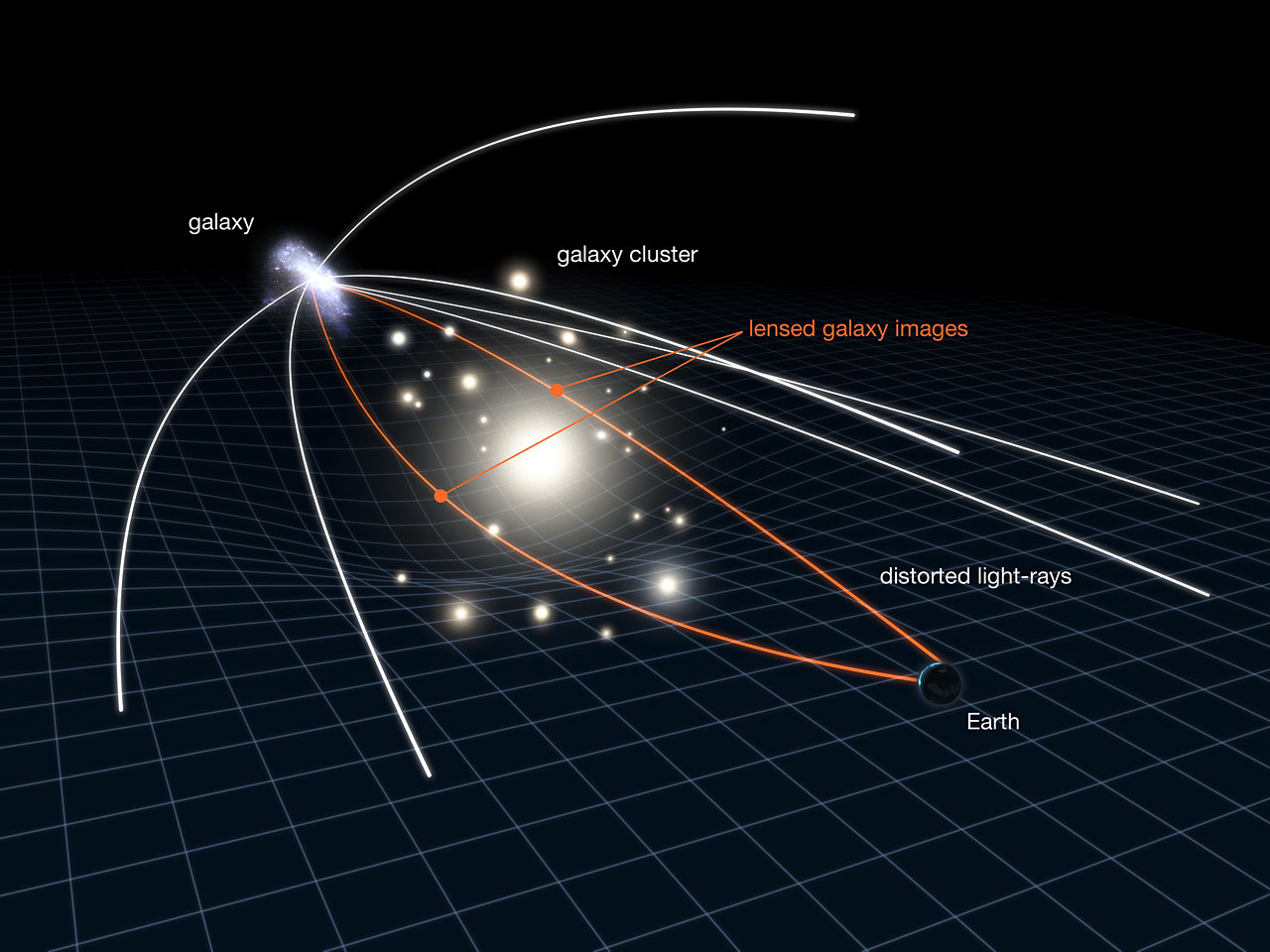
The grid lines in this diagram represent the warping of spacetime around the galaxy cluster. Photo: NASA/ESA/L. Calçada
A uniquely nearby Einstein ring
The Einstein ring imaged by Euclid is one of the closest to home ever found. The lensing galaxy is only 590 million light-years away, or just over 200 times as distant as the Milky Way’s nearest galactic neighbor Andromeda. In fact, astronomers have known of this galaxy’s existence since 1884, before they even knew that galaxies lay outside the Milky Way. Meanwhile, the galaxy that’s being lensed is a lot further — a whopping 4.42 billion light-years away.
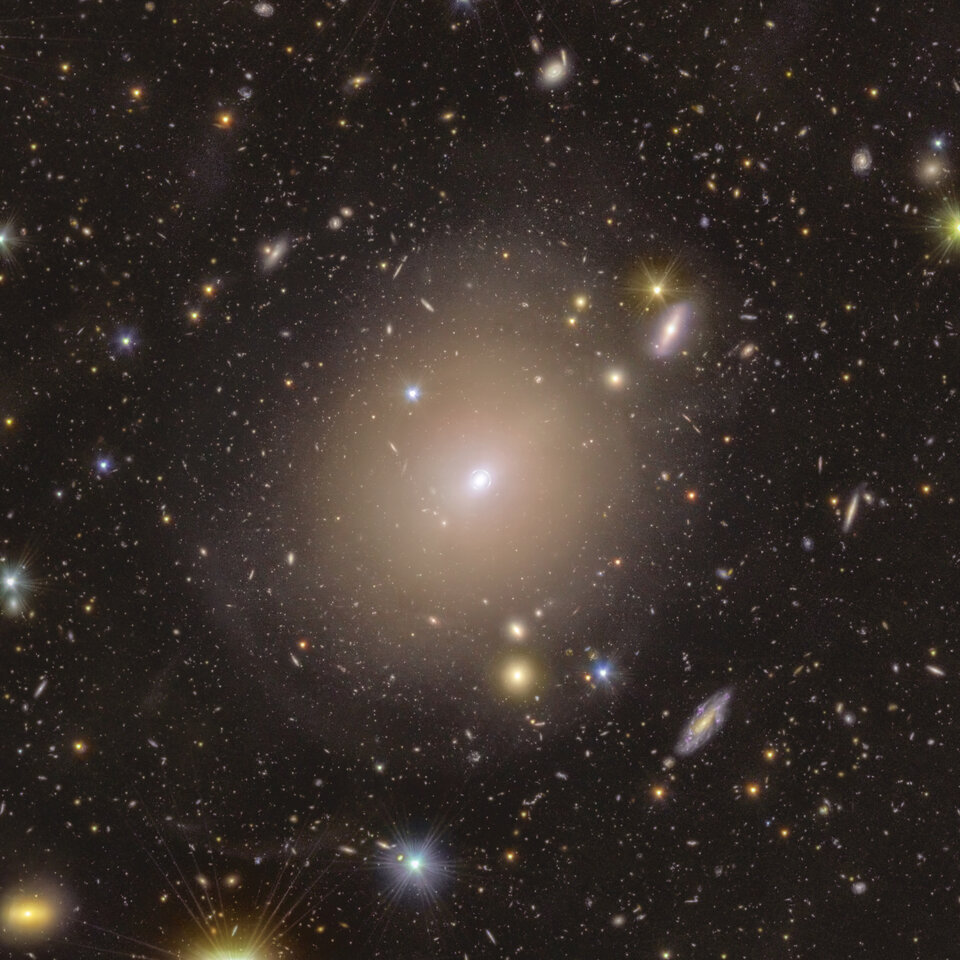
The hazy galaxy at the center of the photo is the lensing galaxy, 590 million light-years away. Zooming in on the center shows the Einstein ring. Photo: ESA
The clues hidden in Einstein rings
Previously, Einstein rings have given cosmologists — astronomers who study the evolution of the universe — key information on early galaxies. Our telescopes have a long way to go before they can detect the earliest galaxies whose light is reaching us. But when that light passes through a gravitational lens, more of it focuses on us. If we’re an ant on the sidewalk, then the lensing galaxy is a kid with a magnifying glass.
That means that our only direct observations of very early galaxies come from lenses like Einstein rings. Cosmologists use them to understand what kind of stars existed in the early universe.
But Einstein rings also provide a lot of information about the galaxy doing the lensing. How massive are they? How is that mass distributed? And how much of it comes from dark matter versus ordinary stars and gas?
In this case, the Euclid team found that the lensing galaxy has more massive stars at its center than the Milky Way does. Massive stars are the rarest, numbering 1 for every 25,000 Sun-like stars. Astronomers still don’t understand all the factors that lead galaxies to form certain types of stars. This Einstein ring adds another piece to the puzzle.
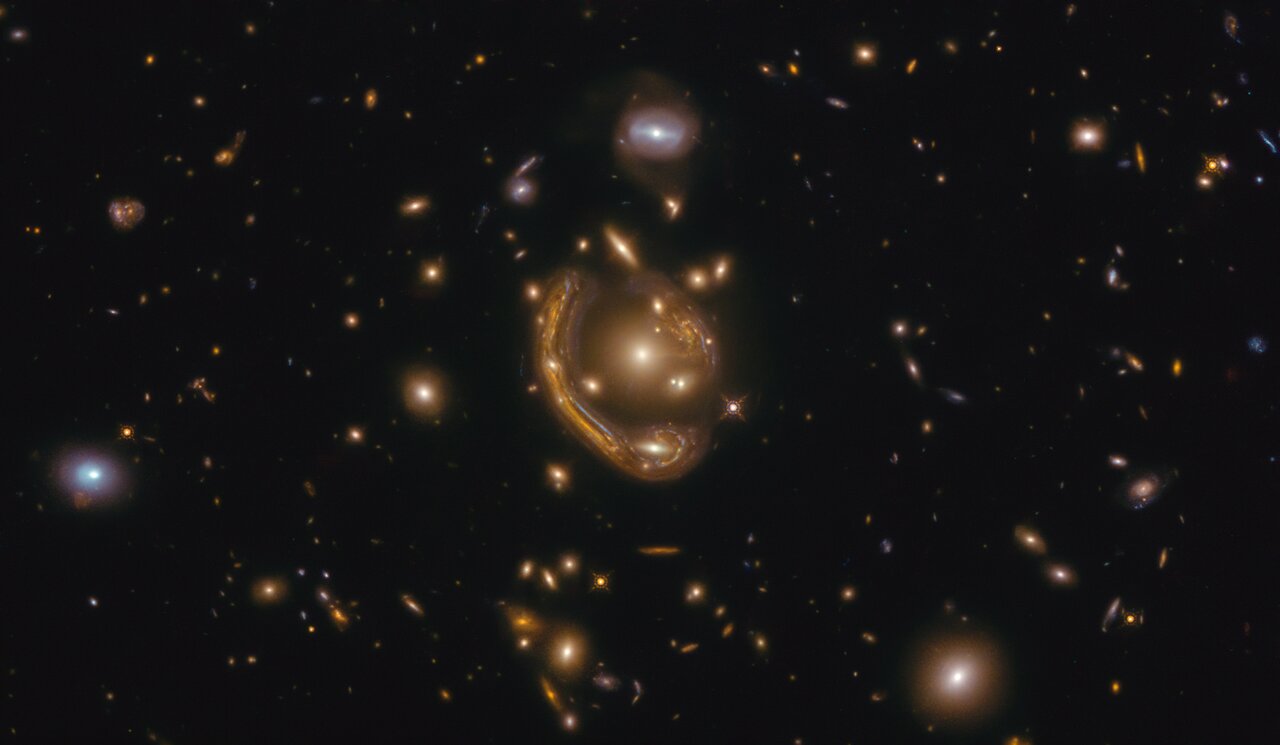
Another example of an Einstein ring. In this case, the ring is distorted because the source galaxy doesn’t lie directly behind the lensing galaxy. Photo: ESA/Hubble/NASA/S. Jha
